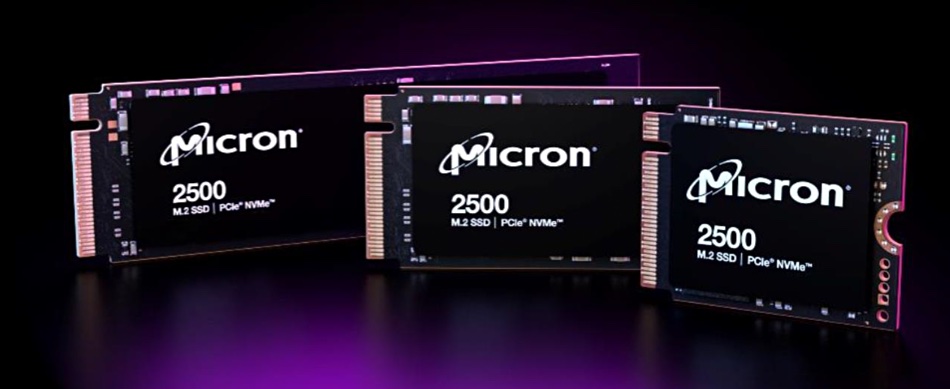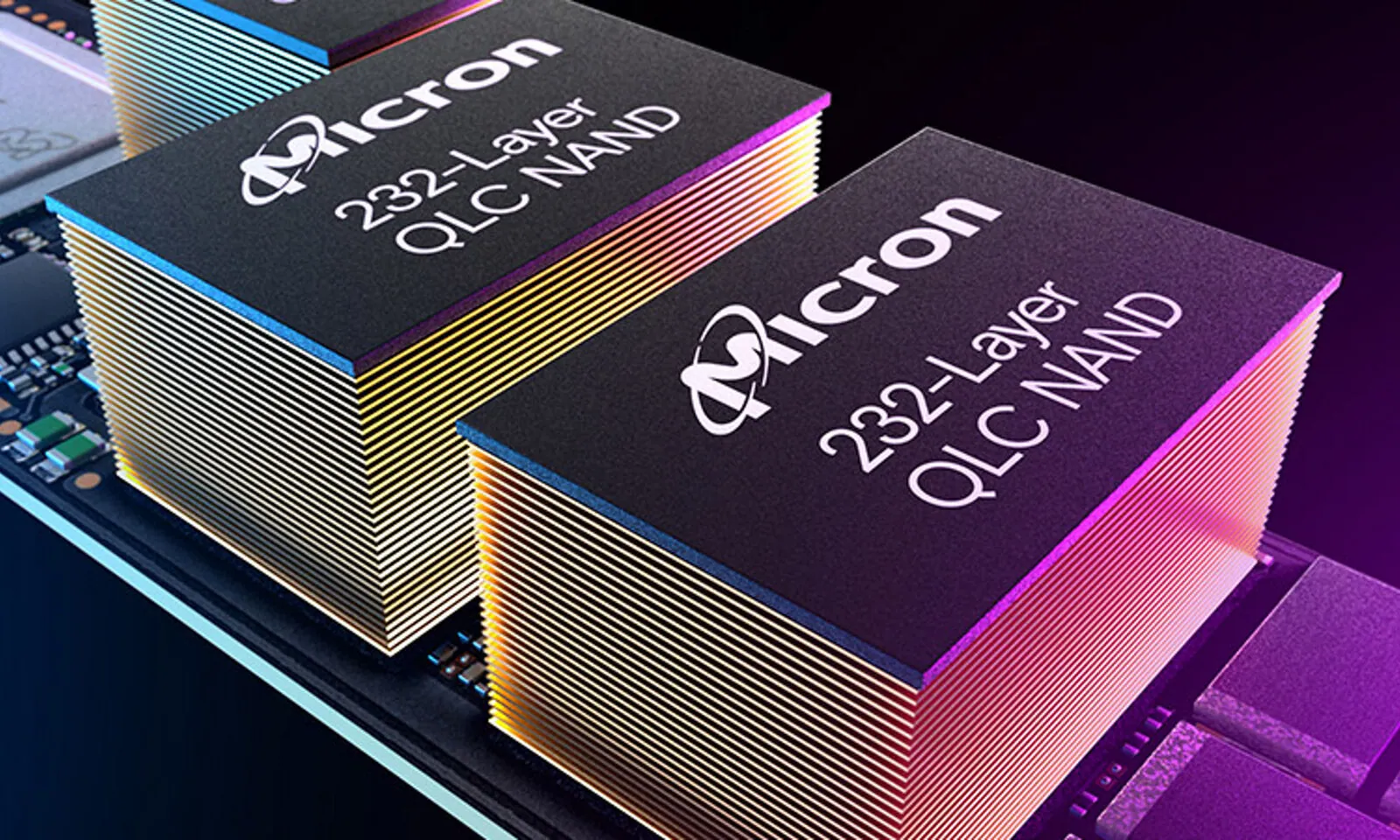Introduction
In the fast-paced world of technology, innovation is the name of the game. Micron, a global leader in memory and storage solutions, continues to push boundaries with its latest release – the Micron 2500 QLC NAND internal fit client product.
This groundbreaking SSD boasts impressive performance metrics, challenging conventional wisdom by outpacing its TLC predecessor, the 2550, despite the inherent differences in NAND technology.
Let’s delve into the intricacies of Micron’s newest offering and explore how it redefines the landscape of client SSDs.
Follow us on Linkedin for everything around Semiconductors & AI

Understanding the Technology
At the heart of the Micron 2500 lies QLC (quad-level cell) NAND, a type of flash memory that stores four bits per cell.
Traditionally, TLC (triple-level cell) NAND, with its three bits per cell, has been associated with higher performance due to its simpler voltage states.
However, Micron’s innovative approach leverages advanced controller firmware, including a lightning-fast SLC (single-level cell) cache and parallel data plane access, to optimize performance despite the complexities of QLC technology.
This is a significant advancement in storage technology as it allows for several benefits:
Higher density: Micron’s 232-layer QLC NAND offers 30% more density compared to their previous generation, enabling them to create smaller and more compact SSDs.
Improved performance: Despite using QLC NAND, typically known for slower speeds than TLC (Triple-Level Cell) NAND, Micron’s controller technology manages to achieve performance exceeding even their TLC drives in some aspects.
Increased capacity: With higher density, these SSDs can hold more data, making them suitable for applications requiring ample storage.
Micron’s 2500 SSD is the first client SSD to integrate this high layer count QLC NAND and is expected to be used in various devices, from mobile phones and laptops to data center storage solutions.
Read More: TSMC Will Charge Its Customers More for US-Made Chips Despite Chips Act Funding – techovedas
A Leap in Layer Count
Micron’s 2500 marks a significant milestone as the first 200-plus layer QLC drive tailored for OEM desktop and notebook applications.
By utilizing cutting-edge 232-layer QLC NAND, this SSD achieves a remarkable 30% increase in density compared to its 176-layer predecessor, the 2400, and a notable 31% boost over the 232-layer TLC NAND used in the 2550.
The journey to enhance NAND technology has taken 16 months, culminating in a product that defies expectations.
Read More: Apple to Employ 5 lakh in Next 3 Years: Set to Scale up Production in India – techovedas
Performance Redefined
In terms of performance, the Micron 2500 stands tall, surpassing both its TLC and QLC-based competitors.
Compared to the 2450 TLC SSD from 2021, the 2500 boasts 24% faster reads and an impressive 31% improvement in write performance.

Image Credits: Blocksandfiles
Micron’s internal benchmarks showcase the 2500’s superiority, with up to a 45% better PC Mark10 score than three competing TLC products, solidifying its position as a performance leader.
Read More: 7 Startup Ideas in Semiconductor Industry – techovedas
Charting the Evolution
A comparative analysis of Micron’s recent M.2 format SSDs underscores the 2500’s prowess. Effectively replacing the slower 2550, the 2500 offers higher capacity, increased IOPS, and improved bandwidth.
Notably, it even challenges the high-end 3500, featuring faster sequential reads and positioning itself as a formidable contender in the realm of data-intensive workloads.
Read More:8 Major Resources to Master Neuromorphic Computing – techovedas
Versatility and Efficiency
Available in small, medium, and large M.2 formats, the Micron 2500 caters to diverse system configurations with PCIe Gen 4 x4 lane connectivity via an NVMe v1.
4c interface. Eschewing the traditional DRAM, the drive employs host-memory buffer technology, further enhancing efficiency and reliability.
Read More: Employ 5 lakh in Next 3 Years: Set to Scale up Production in India – techovedas
Endurance and Power Efficiency
With a focus on longevity, the Micron 2500 offers varying levels of endurance across different capacities, backed by a robust five-year warranty and a 2 million hours MTTF rating. Moreover, its energy-efficient design minimizes power consumption, making it an ideal choice for both performance-driven and environmentally-conscious users.
Read More: 7 Startup Ideas in Semiconductor Industry – techovedas
Conclusion
In conclusion, Micron’s 2500 QLC NAND internal fit client product represents a paradigm shift in SSD technology.
By harnessing the power of advanced controller firmware and pushing the boundaries of NAND layer counts, such as Micron has redefined performance expectations and set a new standard for client SSDs. With its unparalleled speed, efficiency, and versatility, the Micron 2500 is poised to revolutionize the way we experience storage in desktop and notebook environments.




